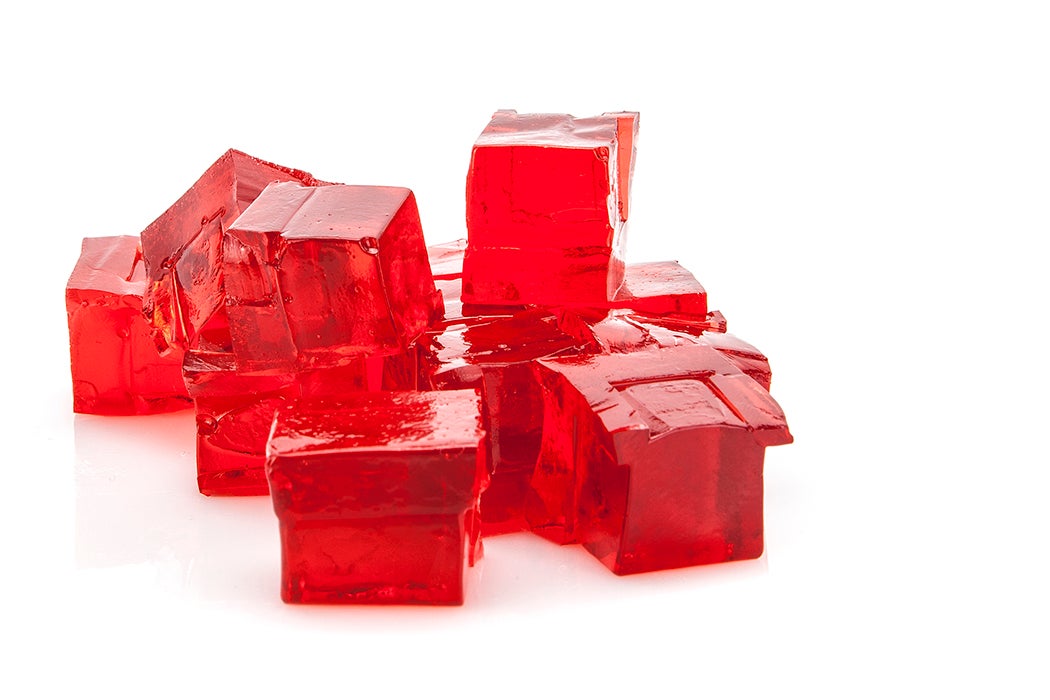You know how to spell it, perhaps while singing in your head “J-e-l-l-o!” What does Jell-O mean? If you associate the food with a jingle or perhaps a truly terrible salad of some kind, you’re not alone. But for Sarah E. Newton, the product lives at the intersection of folklore and popular culture—a place where emotion and cultural import intersect.
Newton has plenty of Jell-O knowledge to drop on those unconvinced of its importance in American life, like the fact that in the late 1980s it was consumed 13.5 times per year in the average American household and that its maker, General Foods (now owned by Kraft), had developed over 1,700 ways to prepare it. From its inception, housewives were encouraged to express their creativity by inventing their own elaborate molds and salads (Under-the-Sea Salad, Ring-Around-the-Tuna, and Broken Window Glass Cake are some memorable examples). The jewel-colored gelatin was once so ubiquitous and well-respected that one interviewee described molded Jell-O as “the most sophisticated thing you could do. There wasn’t anything as elegant. It was the center of the table.”
Jell-O began to fall out of favor in the 1960s, when Julia Child was popularizing exotic Continental flavors (like oregano), and people began ridiculing molded “salads” as unsophisticated. As a result, in the 1990s Jell-O was advertised as a food for children, like in the Bill Cosby “Jell-O jigglers” ad campaign. Because the food is so jiggly and wiggly, it’s beloved by children, who use it as a basis of beliefs, jokes, and even “techniques for forbidden play.” Its association with family celebration also make it a central part in personal narratives and family lore.
And then there are the sexual connotations, with Jell-O being associated with wrestling and even used as a marital aid. Jell-O shots and those other salacious uses contribute, too, to the many jokes about the food. The food’s strange physical properties make it ripe for parody that expresses cultural biases about everything from politics to religion to the economy.
Weekly Newsletter
Thus, Jell-O makes a particularly apt lens through which to view the things that obsess, upset, and fuel Americans. By studying how Americans react and give meaning to Jell-O, Newton says, both the folklorist and the student of American culture can uncover “the intimate, important, and sometimes symbolic relationships people develop between themselves, their world, and the foods they eat.” Read this way, Jell-O’s current rebirth as an only-slightly-tongue-in-cheek culinary art form looks like a symptom of a cultural nostalgia that runs deep.







